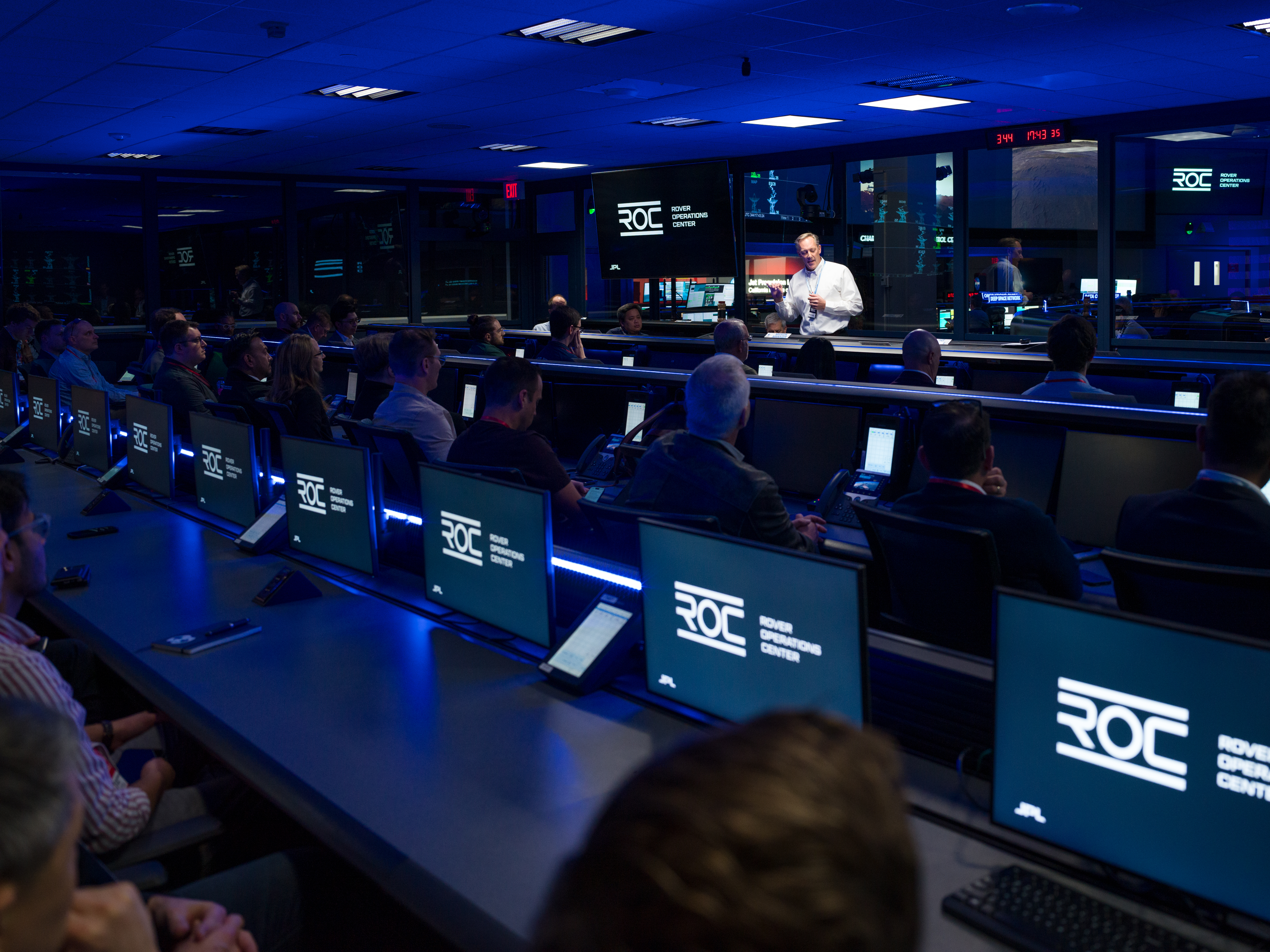Cassini Significant Event Report
For Week Ending 02/15/02
The most recent spacecraft telemetry was acquired from the Goldstone tracking station on Wednesday,
February 13. The Cassini spacecraft is in an excellent state of health and is operating normally. Information on the spacecraft's position and speed can be viewed on the "Present Position" web page.
The C30 sequence continues to execute normally. The primary science activity this week was the uplink of the
Magnetospheric Imaging Instrument (MIMI)- Ion and Neutral Camera (INCA) patch to instrument RAM and
shutter test. This test has implications for Tour, namely pointing constraints near Saturn ring plane crossings if the INCA shutter can not be opened and closed as needed. A preliminary report indicates that the shutter
response was proper.
Imaging Science Subsystem (ISS) team members have developed a plan for further decontamination activities
for the NAC. The plan is to bring the detector temperature up to about +4C near the end of C30 and keep it
there for most of C31 for a total duration of 62 days. Uplink of this activity is planned for early March.
A Preliminary Sequence Integration and Verification Sequence Change Request Approval meeting was held
this week for C31. Version C of the Space Flight Operations Schedule and Sequence of Events files were
released for review. The first Science Planning Team input port for C32 cruise products closed this week.
The end-to-end pointing profile is currently being validated by ACS.
The Orbital Science Uplink Verification (SUPV) activity kicked off this week. This activity will take the
integrated plans to the command level for the pointing profile for a couple of tour orbits, and will conclude in
early May.
Members of the Titan Orbiter Science Team (TOST) met to refine the integrated plans for T11 through T22.
The Satellite Orbiter Science Team (SOST) continued to integrate the SOST segments on orbit 11 and 12
At the Mission Planning Forum, Spacecraft Office personnel presented a summary of why the quiet period
needs to start at approximately SOI -8 days. At this time all instruments must be in their SOI state and
SOI-related IEBs executing internally. The spacecraft will alternate between the SOI telemetry mode and a
Downlink Fields Particles and Waves mode during daily downlinks. Continuous coverage will begin at SOI -2
days. At this point the spacecraft will be in the SOI telemetry mode until the critical sequence is complete.
A disposition meeting was held this week for Requests for Action (RFA) generated at the Project Science
Group Meeting in January. Two RFAs were generated; a proposal from the Surfaces Working Group
regarding observation flexibility as part of the sequence development process, and a concern that insufficient
coverage of the angular distribution of the dust in the E ring would result from current restrictions on the
downlink rolls within the E ring. Recommended actions for both RFAs were accepted and are due in March.
A Delivery Coordination Meeting was held to deliver Version 1.0 Maneuver Automation Software (MAS).
The NAV-MOPS components needed for MAS were delivered in January. MOPS has been installed on
the Multi-Mission NAVLAN HP computers.
MSSO personnel provided a briefing to some Aerospace Engineering students & faculty members from Delft
University of Technology, The Netherlands.
Additional information about Cassini-Huygens is online at http://saturn.jpl.nasa.gov.
Cassini will begin orbiting Saturn on July 1, 2004, and release its piggybacked Huygens probe about six months later for descent through the thick atmosphere of the moon Titan. Cassini-Huygens is a cooperative mission of NASA, the European Space Agency and the Italian Space Agency. JPL, a division of the California Institute of Technology in Pasadena, manages the mission for NASA's Office of Space Science, Washington, D.C.
Media Relations Office
Jet Propulsion Laboratory
California Institute of
Technology
National Aeronautics and Space
Administration
Pasadena, Calif. 91109.
Telephone (818) 354-5011































